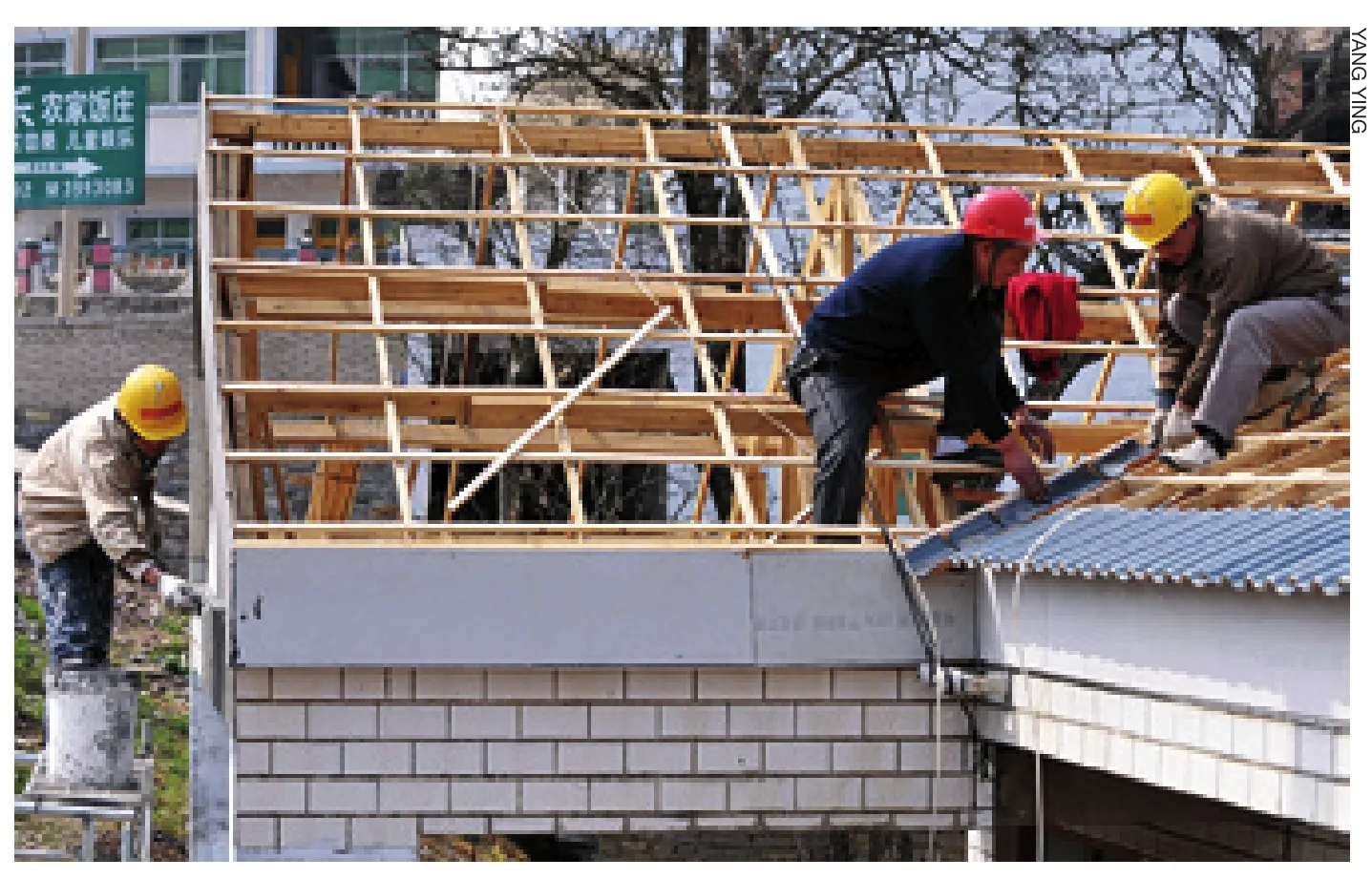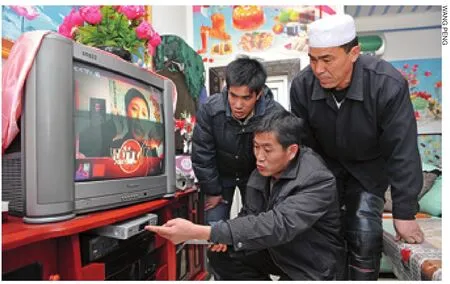Farmers’ No.1 Concern
Rural residents anticipate the impact of the No.1 Document on China’s countryside in 2010
By LAN XINZHEN
Liu Limin, a farmer living in Lanxian County, Shanxi Province, knows the ins and outs of the No.1 Document.From memory, Liu can recite major portions of the most crucial parts of the paper.
“We are more concerned about the No.1 Document than anyone else, because this document involves our interests,” Liu told Beijing Review.
That the No.1 Document is dedicated to issues of agriculture, the countryside and farmers has become as common knowledge among Chinese farmers as planting techniques and basic agricultural know-how.
According to Liu, farmers have two channels to receive information pertaining to the No.1 Document∶ TV reports and group studies organized by the Party committee of each village.
Television now covers all of China’s vast rural areas. And as farmers receive dozens of programs from China’s mainland and, in some places, with the use of satellite TV, from Hong Kong, television has quickly become a major source for those living outside the urban centers of the east coastal area with which to become familiar with the outside world.
Group studies organized by the Party committee offer another unique method of disseminating information quickly and effi ciently in China.
Members of the Communist Party of China (CPC) must study documents and policies of the Party, including the No.1 Document. After CPC members have studied the document, they hold small talks with other villagers where the document’s contents are explained. The talks give villagers the chance to voice their opposition and support.
“We certainly welcome the document.The central leadership is supporting us and we are benefiting from their actions. The more such policies are issued, the better-off we all are,” Liu said.
A helping hand for housing
Liu’s primary concern about the No.1 Document is the availability of government subsidies for farmers seeking materials when building houses.
Built eight years ago, Liu’s current house is not too old. But since the kitchen,bedrooms and living room are not separated well, Liu thinks the layout of the house is unreasonable.
“When building this house, we didn’t fully consider the functions of different rooms.But now farmers are learning from people in cities about housing construction, so I’m also preparing to renovate the house,” he said.
In 2009, China began offering subsidies to farmers to purchase automobiles, motorbikes and home appliances. Many farmers have taken this opportunity to buy or change vehicles, refrigerators, TV sets and computers. Particularly, the growth of computer sales in rural areas is faster than that of other home appliances. The number of rural Internet users is increasing as well. Thanks to government policies, consumption growth in rural areas surpassed that of urban areas for the first time last year. According to figures released by the National Bureau of Statistics, in 2009 the growth of retail sales of consumer goods in rural areas was 0.2 percentage point higher than that of urban areas.
Following vehicle and appliance subsidies, the No.1 Document this year supports farmers who want to build houses as an important measure to expand domestic demand. The government will adopt effective measures to promote sales of building materials in the countryside and encourage local governments to support housing construction.
At present, the Ministry of Finance,the Ministry of Housing and Urban-Rural Development and the Ministry of Commerce are jointly discussing the detailed scheme to carry out this policy.
Liu hopes the scheme can be formulated as soon as possible. “Building houses may use up the savings of many farmers. Subsidies to building materials can relieve our burden,”he said.
Li Guoxiang, Deputy Director of the Rural Development Institute of the Chinese Academy of Social Sciences, thinks that offering subsidies for farmers to buy building materials can relieve burdens in building houses and is also a new growth point for rural consumption. Whether renovating houses or rescuing crumbling houses, farmers need large amounts of building materials—hence the opportunity for stimulating consumption is abundant.
“If the strong consumption potential of building houses in rural areas is stimulated, its growth will be almost the same as in the cities and may last at least 10 years,” Li said.
He also hopes the country can improve the rural building materials market as soon as possible to promote materials sales in rural areas. More importantly, the government should prevent fake and inferior products to avoid any “future troubles” in the quality of houses, Li added.
More funds required
Li Fanmin is head of a village Party committee, a grass-roots official who directly interacts with farmers. Li is a farmer himself.Besides cultivating his own land, he also needs to consider the village’s public affairs.

(Left)BETTER LIVING: Farmers in Guiyang,Guizhou Province, renovate their houses.The No.1 Document will dedicate funds allowing farmers to fix and build their own houses

TUNING IN: Farmers in Yongning County,Ningxia Hui Autonomous Region, learn to use satellite TV. Television has become a major source with which Chinese farmers can learn about news nationwide and abroad
“This year’s No.1 Document says the amount of fi scal contributions to rural areas should increase and its proportion among the total fiscal input should also be raised,” Li said. “This is good news.”
In 2009, the Central Government spent 716.14 billion yuan ($104.85 billion) on agriculture, the countryside and farmers, which was 120.59 billion yuan ($17.66 billion), or 20.2 percent, higher than the previous year.However, most of the expenditures went to rural infrastructure construction. Direct subsidies to grain, comprehensive subsidies to agricultural capital goods, purchasing subsidies to farming machines and subsidies to improved strains—the four most important subsidies directly offered by the government for farmers in agricultural production—received 123.08 billion yuan ($18.02 billion),up 19.4 percent year on year in 2009.
“However, fi scal support to rural areas is far from enough. For many villages, it’s not that they have no way to develop. They want to develop but have no money to do so,” said Li.
Li’s village is a typical poverty-stricken village. “There are abundant marble reserves in our village. Marble is a good kind of building material, but the roads connecting our village are inconvenient,” Li said. “Most of the financial support from the Central Government is used for agricultural production, but the support is often times not enough.”
The No.1 Document of 2010 tries to ensure three things∶ that fi scal expenditures should support the development of agriculture and the countryside; that budgetary fi xed assets investments first be focused on agricultural infrastructure construction and projects to improve farmers’ livelihoods; and that land transferring income first be used for farmland development and rural infrastructure construction. Moreover, the document also expands the scope of tomato subsidies,launches improved barley strain subsidies,carries out pilot projects for improved peanut strain subsidies and incorporates forestry,animal husbandry, as well as drought fi ghting and water-saving machines into the scope of subsidies.
According to the Ministry of Finance,in 2010 it will continue to increase its rural financial support, increase the scale of agriculture-related subsidies, improve agricultural subsidy and price supporting policies and help farmers to increase their incomes.The ministry will also strengthen agricultural and rural infrastructure construction, accelerate development of modern agriculture,regulate major farm produce markets and promote the steady development of agricultural production.
A lack of money in the countryside has long been a problem hampering rural development. Some places have the resources for projects but not the finances. The country hopes to solve this problem through rural financial services, specifically by granting credit to rural residents.
The No.1 Document stresses the importance of strengthening support to major fi elds in rural reform and development. It also requires that fi nancial services should cover all townships within three years.
Statistics show that at present, 2,945 townships (8.6 percent of the total) in the countryside have no fi nancial institutions and 708 townships have no access to any fi nancial services.
Wanting urban status
Li Xinwang, a 26-year-old farmer, prefers death to his rural lifestyle.
“I would rather die than continue farming,” he often said to his father who forced him to work in the fi elds. Eventually, the father, who has been farming all his life, could do nothing to motivate his son and gave up.
Li later went to Taiyuan, capital of Shanxi Province, searching for a job with friends from his village. “I heard the government will relax restrictions on household registrations in small and medium-sized cities, allowing migrant workers with stable jobs and incomes to get urban household registrations. I hope this policy can be implemented so I can live in the city,” he said.
Li’s concern is addressed in the No.1 Document this year. According to a provision of the document, migrant workers who acquire urban household registration will also be incorporated into the public service system, such as social security and housing security.
Finishing secondary education in the countryside and having no affection for farming, but being unable to call cities “home,” a group of “migrant workers of the new generation” such as Li most yearn for their urban household registration.
Tang Renjian, Deputy Director of the Office of Central Financing Work Leading Group and Deputy Director of the Of fi ce of Central Rural Work Leading Group, said that among China’s 150 million migrant workers, the “new-generation” group accounts for about 60 percent, or 100 million people.
“They are longing to enter and establish their lives in the cities and enjoy modern urban lifestyles, but in general we are not ready to accept them just yet,” Tang said. “This is a signi fi cant problem, especially with changes taking place to China’s rural economic and social structures and even to the overall Chinese social structure.”
Although he now works and lives in a city, Li still has no urban household registration, causing his classification to remain as a rural resident and preventing him from enjoying medical insurance, employment,endowment insurance, a minimum living security and education of children in the future reserved for urban residents.
“We contribute to the development of cities, and since we are living there I think the difference between rural and urban household registration should be eliminated soon,” Li said. ■

